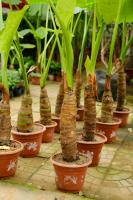Introduction
When it comes to planting fruit trees in zone 6a, timing is of utmost importance. Zone 6a covers a wide area of the United States, including parts of the Northeast, the Midwest, and the Rocky Mountains. The weather and climate in this region can vary greatly, and as such, the best time to plant fruit trees can vary as well. In this article, we'll explore the factors that affect when to plant fruit trees in zone 6a and offer some general guidelines to help you determine the optimal time for planting in your area.
Factors to Consider
Several factors can affect when you should plant fruit trees in zone 6a:
Climate: The timing of the last frost in the spring and the first frost in the fall is an important consideration when planting fruit trees. You want to avoid planting too early in the spring or too late in the fall when frost is still a risk.
Soil temperature: Fruit trees prefer warm soil to grow and establish their roots. If the soil temperature is too cold, the tree may struggle to grow and establish itself.
Type of fruit tree: Different types of fruit trees have different requirements for planting and growing. For example, some fruit trees, such as peaches, require a longer growing season and warmer temperatures than others.
Local conditions: Factors such as the amount of rainfall, humidity, and wind in your specific location can also affect when to plant fruit trees.
General Guidelines
While the optimal time to plant fruit trees in zone 6a will vary depending on the factors listed above, there are some general guidelines to follow:
Plant fruit trees in the spring after the last frost has passed. This usually occurs in late April or early May in most parts of zone 6a.
Make sure the soil temperature is at least 50°F before planting. You can use a soil thermometer to measure the temperature of the soil.
Avoid planting fruit trees during periods of heavy rain or drought.
If planting in the fall, do so before the first frost of the season. This usually occurs in late September or early October in most parts of zone 6a.
Consider the specific requirements of the fruit tree you are planting. Some trees may require planting earlier in the spring or later in the fall than others.
Conclusion
Planting fruit trees in zone 6a requires careful consideration of several factors, including climate, soil temperature, type of fruit tree, and local conditions. By following the general guidelines outlined in this article and taking these factors into account, you can ensure that your fruit tree has the best chance of growing and thriving in your area.

 how many times do yo...
how many times do yo... how many planted tre...
how many planted tre... how many pine trees ...
how many pine trees ... how many pecan trees...
how many pecan trees... how many plants comp...
how many plants comp... how many plants can ...
how many plants can ... how many plants and ...
how many plants and ... how many pepper plan...
how many pepper plan...































